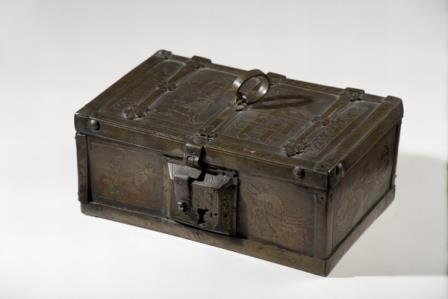Recommendation
In an undated letter received on 2 June 2014 the Minister of Education, Culture and Science (hereinafter referred to as the Minister) asked the Restitutions Committee (hereinafter referred to as the Committee) for advice about the restitution application from AA, also on behalf of his sisters BB, CC and DD, (hereinafter referred to as the Applicants) of 16 March 2014. This restitution application concerns a brass trinket box, an ivory polyptych and a bronze discoid candlestick (hereinafter referred to as the items). The items are among the possessions of the Dutch State, but not of the Netherlands Art Property Collection (hereinafter referred to as the NK collection), and are in Rijksmuseum Twenthe in Enschede (hereinafter also referred to as the Museum).
